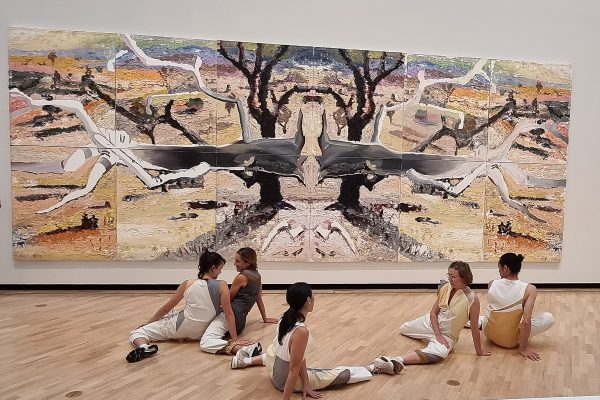
Dance / A Sun Dance, National Gallery. February 24. Reviewed by SAMARA PURNELL.
As the clock ticked over midday, in a small nook of the Australia art section of the NGA, a small group of dancers began to move.
In an homage to the architect of the NGA, Col Madigan, artist Rochelle Haley worked with choreographers Angela Goh and Ivey Wawn to bring her vision to life in A Sun Dance.
The dancers are clad in pants and tops in colours of soft yellow, white and the kind of grey the sky turns before a storm. The colours tie in beautifully with the large paintings behind them, as well as the Christian Thompson video installation, while giving a sense of the softer palette of the Australian daytime sky. So, the location in the gallery is completely harmonious.
A shaft of sunlight through the skylight marks a point of focus for the dancers, who very slowly move, mostly along the floor, toward and from this space. They explore the boundaries of the sunlit box, notice their shadows, and use hyper slow-motion to bask, slide, extend and pause. With these movements, the opportunity to reflect, slow down and meditate is extended.
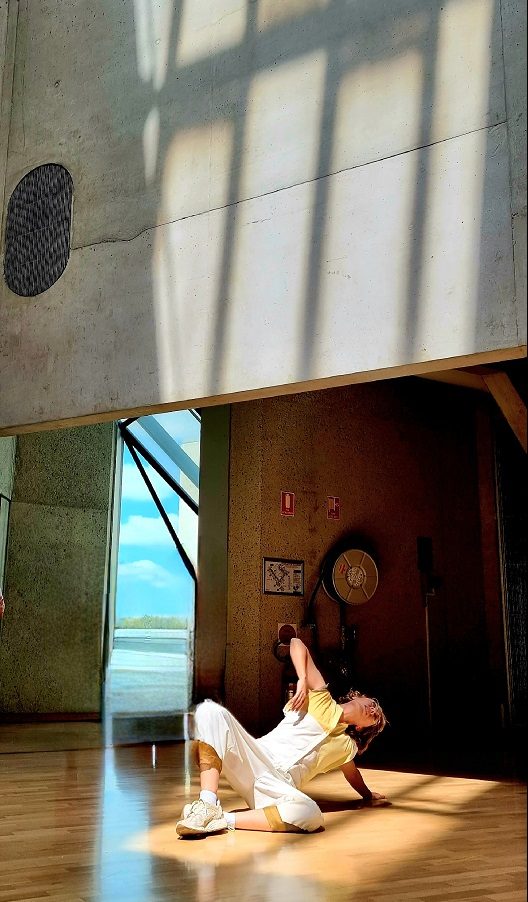
Quiet bells, a soft chime strike and occasional hums from the dancers provide a soundscape to the installation, along with periods of silence. The curiosity to find the source of the sounds draws the gaze up and around the gallery. The musician is spotted in a small nook overlooking the gallery. This is another tactic that has no doubt been used to encourage the audience to notice, take-in and contemplate the design and acoustics of the gallery – the crevices, the open spaces, the quietness, the noises and the sun on floor spreading beyond the constraints of where it seems it could.
When the gaze drifts back to the dancers, the light has shifted significantly, juxtaposing such slow movements with a swift change in light.
At times it was difficult to navigate a spot to stand in or move to, given the number of people watching, the angles of the room and the elements to be considered (plentiful staff made sure people were moved along if they got within cooee of an artwork).
A woman sketches, inspired by what she is seeing. Several take photos, but all stay reverently still and quiet.
After an hour, the dancers came together, a louder, single note signalling the next phase. They created angles and lines against corners of the walls and as a group formed tableaux in front of the paintings and sculptures as they moved out of the gallery.
A Sun Dance automatically encourages engagement from purely observational to active. The elements of movement, sound, art, light and architecture combine to create the opportunity to contemplate, meditate and view artforms in a specific place. The gallery has amazing angles and shapes. A Sun Dance extends an invitation to see artforms, architecture and the daytime colours in a new light.
Who can be trusted?
In a world of spin and confusion, there’s never been a more important time to support independent journalism in Canberra.
If you trust our work online and want to enforce the power of independent voices, I invite you to make a small contribution.
Every dollar of support is invested back into our journalism to help keep citynews.com.au strong and free.
Thank you,
Ian Meikle, editor
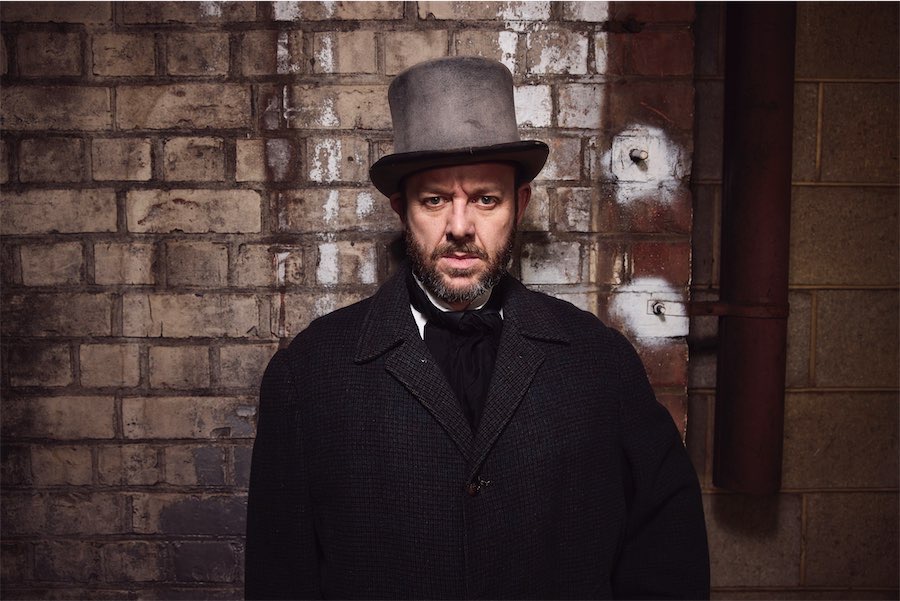
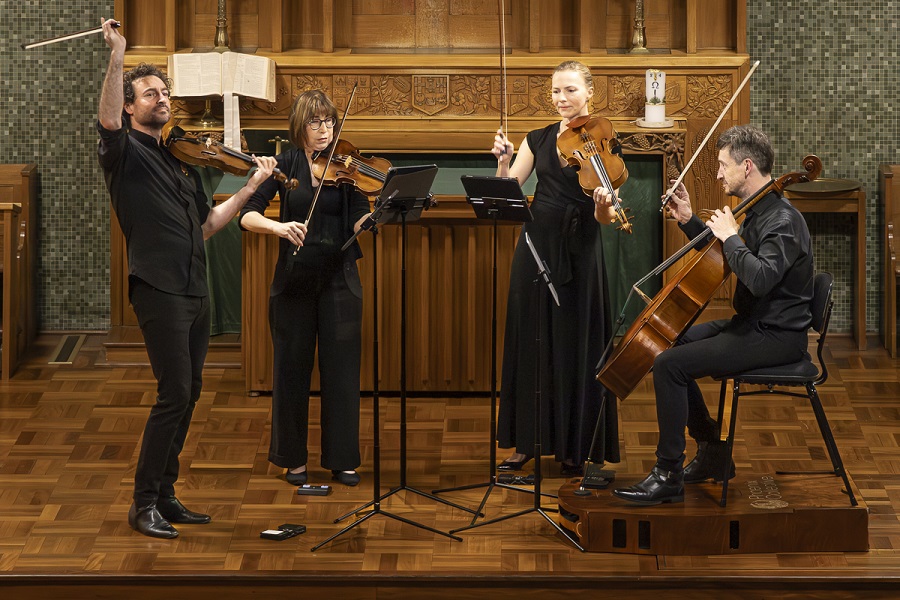
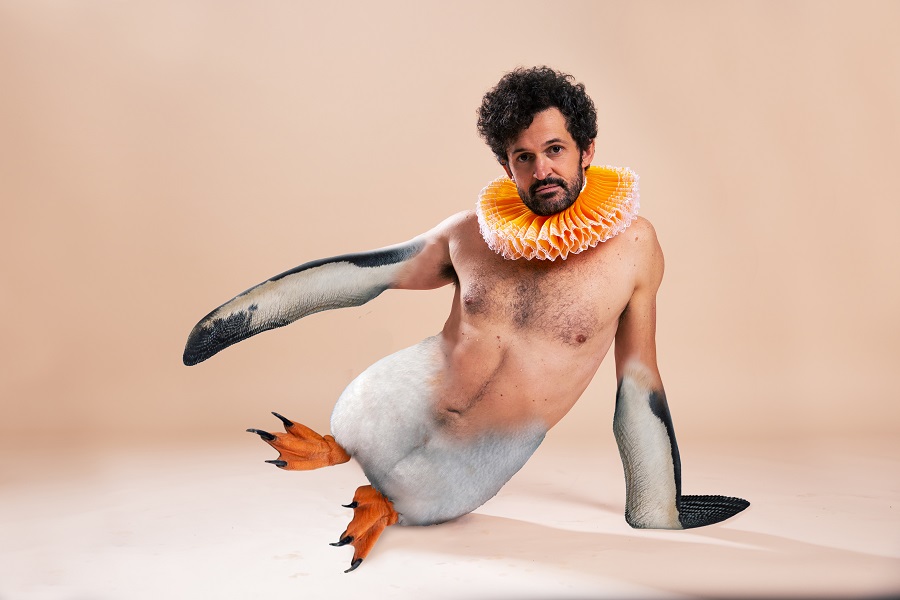

Leave a Reply